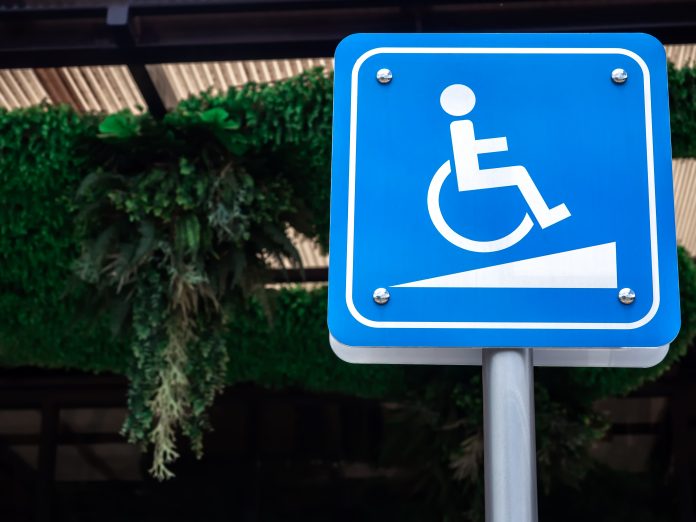If you blinked you probably missed it, but just a few weeks ago the government marked the 50th anniversary of the blue badge scheme
Transport secretary Grant Shapps described the scheme as a “lifeline for so many disabled people” and reminded the public that it was extended last year to cover hidden disabilities.
Chris Heaton-Harris, described as the accessibility minister, said a lot has been achieved “but we must continue to do more”. And that was about it.
It’s entirely possible they wanted to expand on their plans under their ‘inclusive transport strategy‘ but had other things on their plate, although the brevity with which they dealt with such an important matter left many unimpressed.
As might be expected Shapps attracted a certain amount of criticism on social media, but for at least one unexpected reason. One response demanded the removal of the EU stars from the blue badge but most stuck to transport issues – the abuse of the blue badge scheme, delays in receiving badges, increased demand as a result of including hidden disabilities.
One showed a photograph of a Conservative MP’s campaign car parked in an accessible bay at the roadside, but it didn’t indicate whether a blue badge was on display and of course it is entirely possible the driver or their passenger had an impairment.
Active travel
The more interesting and relevant responses came from those who questioned the government’s lack of action to help disabled people access forms of active travel.
The Covid-19 restrictions briefly placed active travel at the top of the news agenda with the government urging anyone who had to make an essential journey to do so by using active travel methods – walking or cycling – rather than adding to the problems facing public transport.
It didn’t take a genius to work out that the reduced frequency of rail and bus services coupled with the concerns about sharing space with other people and then followed by the need to wear face coverings would encourage travellers to stick to their cars.
The emergency active travel fund was launched to help local authorities make their environments more welcoming for pedestrians and cyclists with pop-up bike lanes, protected space for cyclists, wider pavements, safer junctions and bus-only corridors. Many improvements are temporary but still take time to introduce, and meanwhile the car lobby is calling for bus lanes to be scrapped given the decline in use of public transport.
Add to that the suggestion that streets in town and city centres could be closed to traffic to create more space for outdoor dining and drinking and you have a recipe for continuing confusion, congestion and competition for those precious parking spaces!
Remember the needs of disabled travellers
It all adds up to an opportune time to remember the needs of disabled travellers, to include them in developing even a temporary strategy and to consider whether any accessibility benefits which result could be retained in the longer term.
Key points to remember are that improvements bring benefits for all travellers, not only disabled travellers, and this isn’t just about wheelchair-users, it’s about people who have hidden impairments, conditions such as emphysema or asthma with a need to be careful about using public transport and a confidence that everybody is adhering to the restrictions.
Making the use of face coverings mandatory on public transport has itself led to inconsistencies. According to media reports some transport companies enforce it, others don’t, which might resonate with wheelchair-users who have occasionally been told there’s no space for them on the bus.
The simple facts are that the tendency of people to counter current public transport concerns by using their own cars more often is unlikely to drop significantly when the pandemic ends. Road closures are likely to make other routes busier and, as we already know from pedestrianisation schemes, can leave disabled people having to park further away from their destinations with the result that it’s not worth them making the journey. The situation can push away people who have poor mobility by taking places out of their reach.
Improve the mobility of disabled people
Another fact is that the easiest way to avoid accessibility issues is for disabled people to stay at home, but that’s hardly a sensible approach in this day and age. The aim should be to improve the mobility of as many people as possible to support businesses and other services.
In our work we refer quite often to ‘A Guide to Inclusive Cycling‘, published by the Wheels for Wellbeing charity which works to remove the barriers facing disabled children and adults who want to enjoy cycling.
The charity looks at ways in which public transport systems fail to accommodate disabled cyclists and at how the built environment generally forces disabled people “to use inactive, polluting and expensive forms of transport.”
Working to the social model of disability, Wheels for Wellbeing promote a message which should be considered and addressed across all aspects of daily life: “A person is disabled by society rather than by their impairment or health condition.”
About Access

















